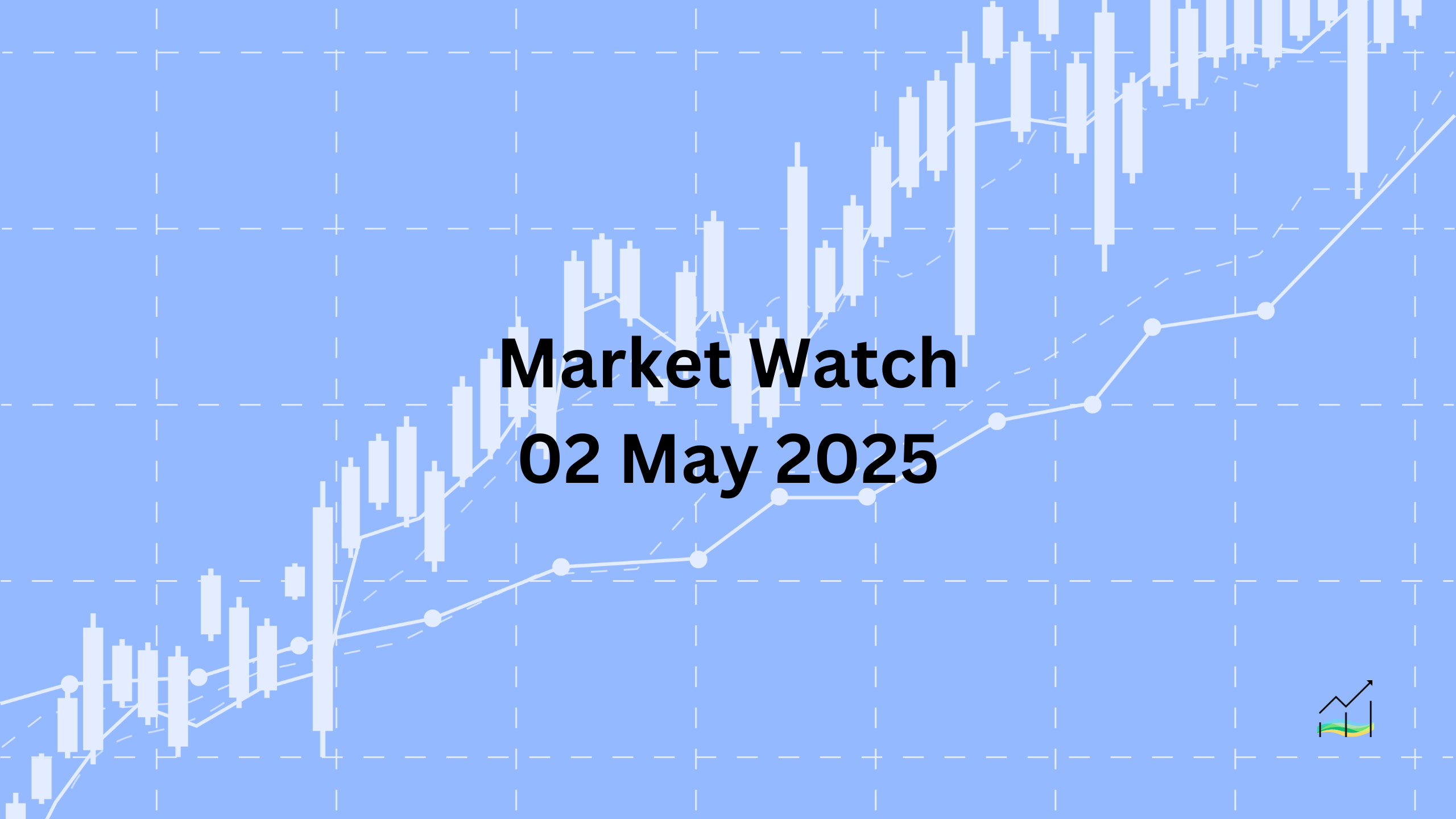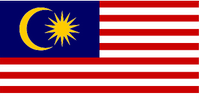02/05/2025 Market Watch

Risk Sentiment Improves Ahead of U.S. Jobs Data
Key Takeaways:
- US dollar retreats despite recent signs of economic resilience.
- Risk sentiment lifted by hints of US-China dialogue, but skepticism remains.
- Global equities rally; bond yields mixed; gold recovers from recent lows.
- Oil pulls back ahead of key OPEC+ meeting despite Iranian sanctions news.
The US dollar briefly confirmed a bottoming pattern after markets reassessed the implications of the Q1 GDP contraction, with recent data suggesting the US economy may not be slowing as much as feared. However, renewed risk appetite in global markets — partly driven by speculation that China may be considering Washington’s request to resume trade talks — dragged the greenback lower across the board. While optimism around US-China engagement has grown, we remain doubtful that any material progress is imminent, particularly in light of Washington’s latest threat to impose sanctions on countries purchasing Iranian oil — a direct shot at China — and the looming activation of new tariffs on small parcels from China.
The dollar is down against all G10 currencies and most emerging market peers, with the exception of the Mexican peso and Russian ruble. Against the offshore yuan, the greenback has fallen to its weakest level since March 20, trading near CNH7.2280.
Equity markets are firmly in risk-on mode. Asia-Pacific indices rallied broadly, led by Taiwan’s Taiex with a 2.7% jump. Although mainland Chinese markets are closed until Tuesday, Hong Kong-listed mainland companies rose nearly 2%. In Europe, the Stoxx 600 is up nearly 0.9%, marking its ninth consecutive advance and the largest daily gain in a week. US index futures also point slightly higher.
Bond markets are showing mixed signals. While most European 10-year yields rose 2–3 basis points, the UK Gilt yield tumbled nearly six basis points to 4.42%, the lowest in three months. The 10-year US Treasury yield edged down to 4.20%, slightly below last week’s 4.24% close.
Gold, which tested $3200 yesterday — its lowest since mid-April — has rebounded and is now trading near $3265 in Europe. However, it remains roughly $50–$55 lower on the week. Meanwhile, WTI crude briefly rallied toward $60 on US sanctions pressure but fell back below $59 as traders positioned ahead of Monday’s OPEC+ meeting. A week ago, WTI was near $63.
United States of America
Overview
The US dollar’s attempt at a breakout has faltered. After briefly rising above the 100.20 level, the Dollar Index pulled back to 99.80, showing a lack of follow-through buying. A move below the 99.50–99.60 zone would be a setback for dollar bulls and reinforce the view that recent strength was corrective rather than the start of a broader trend. Today’s market focus is firmly on the April nonfarm payrolls report, with expectations coalescing around modest job growth.
Consensus sees a gain of 138k jobs, including 125k from the private sector, but downside risks remain due to the weak ADP report. Some desks cite a lower “whisper number,” anticipating that actual payrolls could disappoint. Still, the unemployment rate — a potential driver of Fed policy reaction — is expected to hold steady, with less than 10% of Bloomberg survey respondents projecting a rise to 4.3%. Unless the data significantly deviates from forecasts, market pricing for next week’s FOMC meeting is unlikely to shift. Futures continue to price a roughly 62% chance of a rate cut in June and nearly four cuts in total this year, even as many acknowledge that Q1’s negative GDP print was skewed by pre-tariff inventory effects.
Economic Drivers
- Dollar Index retreating after failing to sustain above 100.20.
- Markets remain cautious ahead of key US labour market data.
- Risk of weaker-than-expected NFP due to soft ADP report.
- Fed unlikely to react without a material shift in unemployment.
- Q1 GDP contraction widely seen as statistical noise from tariff timing.
Data and Events
- May 3 – April Nonfarm Payrolls Report (expected: +138k; private sector: +125k).
- May 3 – US Unemployment Rate (expected: 4.2%; <10% see 4.3%).
- May 3 – US Average Hourly Earnings (MoM and YoY).
- May 3 – US Participation Rate.
Price Action
- Dollar Index broke above 100.20 but failed to hold, now testing support near 99.80.
- Break below 99.50–99.60 would undermine bullish momentum.
- Futures pricing still shows strong conviction for June rate cut.
Key Points:
- Dollar Index has pulled back after failing to hold 100.20 breakout.
- April NFP data is key, with downside risks after ADP miss.
- Unemployment rate expected to remain stable; Fed reaction likely muted.
- Markets still price 3–4 cuts by end-2025, with 62% chance of a June move.
Australia
Overview
Australia heads to the polls tomorrow, with current polling suggesting a likely win for the incumbent Labor Party. While continuity is expected, investors generally favour a coalition government over a minority one, as it offers clearer policy direction. Fiscal stimulus has already been announced prior to the election, aligning Australia with other high-income economies that are deploying greater fiscal support.
On the monetary front, Australia is grouped among central banks — including the Federal Reserve and Bank of England — expected to pursue more aggressive easing ahead, in contrast to relatively hawkish peers such as the ECB, and Bank of Canada. The Australian dollar briefly pulled back from a four-month high near $0.6450 earlier this week but has since recovered from a low around $0.6355. It is now trading near session highs around $0.6445, buoyed by optimism over possible US-China trade talks. However, despite the rebound, the broader technical setup suggests a potential topping formation, and the recent strength may mark the end of the rally that started with the key reversal on April 9 from $0.5915. A modest correction could see the pair retesting the $0.6200–0.6445 zone.
Economic Drivers
- National election scheduled for tomorrow; Labor Party favoured to win.
- Pre-election fiscal support aligns with global trend of pro-growth spending.
- RBA seen among central banks likely to cut rates more aggressively.
- Investor preference leans toward a coalition outcome for policy stability.
- Hopes of US-China trade dialogue supporting risk-sensitive AUD.
Data and Events
- May 4 – Australian Federal Election.
Price Action
- AUD/USD rejected near $0.6450, then rebounded off $0.6355 lows.
- Currently testing session highs near $0.6445 on trade optimism.
- First correctional target sits in the $0.6200–0.6445 range.
Key Points:
- Labor Party favoured in tomorrow’s election; policy continuity expected.
- Fiscal stimulus already in play; RBA expected to lean dovish.
- AUD supported by risk-on sentiment and US-China trade hopes.
- Rally may be running out of steam; watch for correction into $0.6200–0.6445.
Canada
Overview
The US dollar’s recent break to a six-month low against the Canadian dollar on Wednesday now appears to have been a bear trap, with the pair rebounding sharply yesterday in line with broader greenback strength. If the retracement of last month’s USD losses continues, key upside targets lie at CAD1.3925 and CAD1.4000. However, price action has so far been capped below CAD1.3860, with support holding firmly near the CAD1.3800 zone.
Large option expiries are also in play and could influence near-term direction. Today sees nearly $700 million expiring at CAD1.3895, while Monday brings $1.65 billion at CAD1.3870 and another $1 billion at CAD1.3865 — all potentially acting as magnets or resistance caps. Looking ahead, next week’s calendar includes services and composite PMIs, as well as the March goods trade balance, but the spotlight will be on Friday’s April labour market report. Canada lost nearly 33k jobs in March, with a sharp drop of 62k full-time positions. Expectations are for a modest rebound of 25k jobs in April, which would leave the unemployment rate unchanged at 6.7%.
Economic Drivers
- Wednesday’s USD/CAD breakdown appears to have been a bear trap.
- Heavy option expiries at CAD1.3865–1.3895 may influence price action.
- Canadian labour market expected to stabilise after sharp March losses.
- Macro focus shifts to jobs report next Friday.
Data and Events
- May 6 – Canada S&P Global Services PMI (Apr).
- May 6 – Canada S&P Global Composite PMI (Apr).
- May 7 – Canada International Merchandise Trade (Mar).
- May 10 – Canada Employment Change (Apr; expected: +25k).
- May 10 – Canada Unemployment Rate (Apr; expected: 6.7%).
Price Action
- USD/CAD rebounded after bear trap; support held at CAD1.3800.
- Resistance seen at CAD1.3860, with expiry clusters near that zone.
- Next key resistance levels at CAD1.3925 and CAD1.4000.
- Option expiries may create short-term volatility.
Key Points:
- USD/CAD bounced after false breakdown; upside targets in focus.
- Options clustering at CAD1.3865–1.3895 could constrain moves.
- Canada’s April jobs report is next week’s focal point.
- Labour market seen recovering modestly after March’s sharp decline.
China
Overview
Comments from China’s Commerce Ministry suggesting it is “evaluating” potential trade talks with the US have lifted global risk sentiment today. The remarks come in response to recent signals from senior US officials expressing interest in restarting dialogue. While markets appear eager to embrace this prospect, the broader context calls for caution. Just yesterday, Washington threatened sanctions against countries purchasing Iranian oil — with China being the largest buyer. Moreover, the US de minimis tariffs on small imports from China come into effect today, further clouding the outlook.
This combination of diplomatic tension and rising trade frictions makes a near-term breakthrough in negotiations unlikely. Additionally, the timing is suspect: the pressure on the US is mounting as incoming container volumes plunge, suggesting the White House may be seeking to ease tensions selectively. Chinese mainland markets remain closed for the May Day holiday and will reopen next Tuesday. Still, optimism over potential talks has pulled the offshore yuan (CNH) higher. The dollar has dropped to CNH7.2345, its lowest level since March 20, from around CNH7.2730 before the onshore yuan closed (CNY7.2714) for the holiday.
Economic Drivers
- China says it is evaluating US request for trade talks, lifting sentiment.
- US de minimis tariffs on small Chinese imports take effect today.
- Washington’s threat of sanctions over Iranian oil targets China directly.
- Market hopes for a thaw, but geopolitical and economic pressure persist.
- Mainland Chinese markets remain shut until Tuesday.
Data and Events
- May 7 – Chinese mainland markets reopen after May Day holiday.
Price Action
- Offshore yuan (CNH) rallied to ~CNH7.2345, strongest since March 20.
- USD was around CNH7.2730 before onshore markets closed (CNY7.2714).
- Move driven by optimism over potential US-China trade thaw.
- Risk of reversal if no concrete talks materialise.
Key Points:
- China “evaluating” trade talks with US; risk appetite lifted.
- US sanctions and tariffs weigh on prospects for real engagement.
- Offshore yuan rallies, but skepticism warranted.
- Mainland markets to reopen next Tuesday.
Europe
Overview
The euro briefly dipped to nearly $1.1265 yesterday, momentarily breaching the 20-day moving average (~$1.1280) for the first time in almost a month. A decisive close below that level would confirm a bearish pattern, with room for a potential two-cent decline. However, the single currency has regained ground and is currently bid near $1.1350 in early European trade.
On the data front, the preliminary estimate for April CPI came in slightly firmer than expected. Headline inflation rose 0.6% month-over-month, keeping the annual rate steady at 2.2%. More importantly, the core inflation rate climbed to 2.7% from 2.4%, equaling the highest reading this year. Despite this, markets remain confident that the European Central Bank will begin cutting rates at its next meeting. However, expectations for aggressive easing have been pared back. The swaps market is pricing one cut for Q3 and around a 55% probability of another in Q4. Final April manufacturing PMI also improved marginally to 49.0 — its fourth monthly increase — but remains in contraction territory and has not crossed the 50 line since June 2022.
Economic Drivers
- April CPI slightly firmer, with core inflation reaching 2.7%.
- Market still expects ECB rate cut in June, but slower pace of easing priced in.
- Manufacturing sector continues to contract despite modest improvement.
Data and Events
- May 2 – Eurozone Final Manufacturing PMI (Apr): 49.0 (vs. 48.7 prelim).
- May 2 – Eurozone CPI (Preliminary, Apr): Headline YoY 2.2%, Core YoY 2.7%.
- May 3 – Eurozone Producer Price Index (Mar).
Price Action
- EUR/USD dipped to $1.1265, briefly breaching 20-DMA before rebounding.
- Currently bid near $1.1350; technical outlook hinges on 20-DMA close.
Key Points:
- Euro dipped below key support but bounced back near $1.1350.
- April CPI firmer than forecast, but ECB still expected to cut in June.
- Core inflation matches year-high at 2.7%; disinflation trend uneven.
- Manufacturing PMI still below 50; sector remains in contraction.
Japan
Overview
Japan's March labour market data showed a slight weakening in employment conditions. The unemployment rate ticked up to 2.5% from 2.4%, though the job-to-applicant ratio improved to 1.26 from 1.24 — indicating that job openings remain plentiful despite the modest rise in joblessness. With the Bank of Japan's April policy meeting now behind us, the market has dialled back expectations for policy tightening. Swaps pricing reflects just 8 basis points of rate hikes for 2024, down sharply from nearly 40 basis points projected in late March.
However, the near-term outlook for the yen is being driven more by technical and positioning factors than economic data. Option expiries may also influence price action in the immediate term. Today, $1.1 billion in options at JPY146 are set to expire, with another $1.5 billion expiring at the same level next Tuesday. So far, USD/JPY has traded between a low of ~JPY144.45 and a high just above JPY145.90. Separately, Finance Minister Kato noted Japan’s significant holdings of US Treasuries ($1.1 trillion) could provide diplomatic leverage in talks with the US — although currency issues have not yet been formally discussed.
Economic Drivers
- March unemployment rose slightly to 2.5%, job openings ratio improved to 1.26.
- BOJ policy outlook remains dovish; rate hike expectations scaled back.
- Option flows around JPY146 may cap near-term volatility.
- FX policy not yet addressed in US-Japan bilateral discussions, per Finance Minister Kato.
Data and Events
- May 2 – Japan Unemployment Rate (Mar): 2.5% (vs. 2.4% prior).
- May 2 – Japan Job-to-Applicant Ratio (Mar): 1.26 (vs. 1.24 prior).
Price Action
- Trading range today: ~JPY144.45 – JPY145.90.
- Bullish breakout projects into JPY148.00–148.50.
- Key expiries at JPY146 may influence near-term moves.
Key Points:
- Slight rise in unemployment but improved job availability.
- Market pricing in less BOJ tightening than earlier projected.
- USD/JPY breakout targets JPY148+; watch JPY146 option expiries.
- FX not yet discussed in US-Japan bilateral talks despite rising sensitivity.
United Kingdom
Overview
Sterling is showing signs of a potential top, though the structure is less defined than the euro’s topping pattern or the bullish breakouts in the Dollar Index and USD/JPY. GBP/USD is holding firm near $1.3310 in early European trading, but technical risks are building. A break below last week’s low near $1.3235 could open the door for a deeper two-cent pullback. Attention is now shifting to the upcoming Bank of England policy meeting on May 8.
Markets are fully pricing in a 25 basis point rate cut, which would lower the base rate to 4.25%. Further easing is expected into year-end, with the swaps market now pricing a terminal rate around 3.5%, down from just under 4.0% at the start of April. Meanwhile, the British Retail Consortium has warned that recent policy measures — including a 6.7% increase in the minimum wage and a £26 billion rise in payroll taxes — could drive further inflation, especially in food prices.
In the political arena, yesterday’s local elections delivered a blow to both major parties. The Reform Party secured the only parliamentary seat up for grabs, previously held by Labour. This result, coupled with generally weak showings for both Labour and the Conservatives, may fuel internal divisions in both parties as general election pressures mount.
Economic Drivers
- BoE expected to cut rates by 25 bps on May 8; further easing seen by year-end.
- Swaps now price a 3.5% base rate by December.
- BRC warns wage hikes and tax burdens could raise inflation risks.
- Reform Party gains in local elections; political volatility may rise.
Data and Events
- May 8 – Bank of England Monetary Policy Meeting (rate cut expected: -25 bps).
Price Action
- GBP/USD firm near $1.3310; last week’s low at $1.3235 is key near-term support.
- A close below $1.3235 could trigger a two-cent retracement.
- Technical outlook vulnerable if support fails.
Key Points:
- Sterling risks deepening pullback if $1.3235 breaks.
- BoE set to cut rates; swaps price 75 bps total easing by year-end.
- Policy-driven inflation risk flagged by retail industry.
- Reform Party gains highlight rising political fragmentation.
© 2025 SKONE Enterprise (003319453-V). All rights reserved.
The content on this site is for informational purposes only and does not constitute financial advice.


